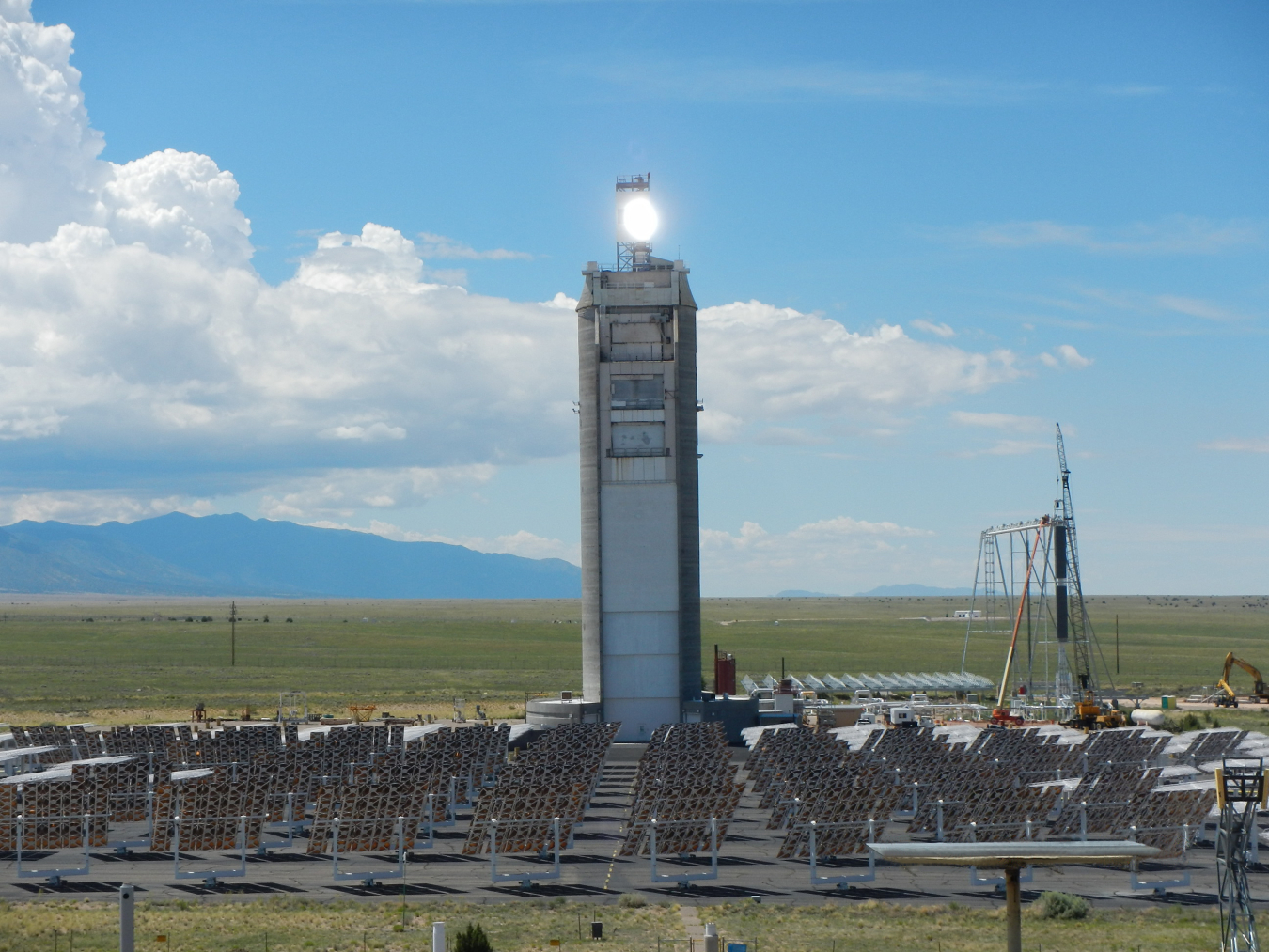EERE Success Story—Reaching New Limits with Solar Storage
February 25, 2016
Sunlight reflected from heliostats is shining directly on the particle receiver, which is currently being tested on top of the solar tower at the National Solar Thermal Test Facility.
One of the biggest challenges of large-scale deployment of solar energy is figuring out how to use it after the sun sets. SunShot Initiative awardees continuously work to explore new energy storage solutions and improve old ones. A project funded through the Concentrating Solar Power (CSP) SunShot Research and Development program is making remarkable progress with CSP.
Researchers at Sandia National Laboratory are testing a falling particle receiver at the National Solar Thermal Test Facility. Typically, receivers use heat transfer fluids such as molten salt to collect and store solar energy produced in CSP generation. This project instead uses a cascade of particles called proppants. The proppants are made from iron oxide and silica, a material similar to sand. While they have never been used in particle receivers, proppants have the potential to be very efficient.
Historically, commercially available receivers that use molten salt cannot operate at temperatures higher than 500° to 600°C. Proppants, however, are capable of reaching limits as high as 1,200°C and beyond. Researchers at Sandia aimed to reach 700°C for this project, and have exceeded their expectations with tests demonstrating temperatures as high as 840°C.
These high temperatures translate into higher efficiencies, allowing for the same amount of stored sunlight to produce more power for the grid at all hours of the night. The project was so successful that this research now continues under SunShot's National Laboratory Multiyear Partnership funding program so even higher temperatures and efficiencies can be reached.
This project won a 2016 R&D 100 Award for being one of the year's top innovations in the research and development space. Learn more about CSP component research and development.
The Office of Energy Efficiency and Renewable Energy (EERE) success stories highlight the positive impact of its work with businesses, industry partners, universities, research labs, and other entities.

